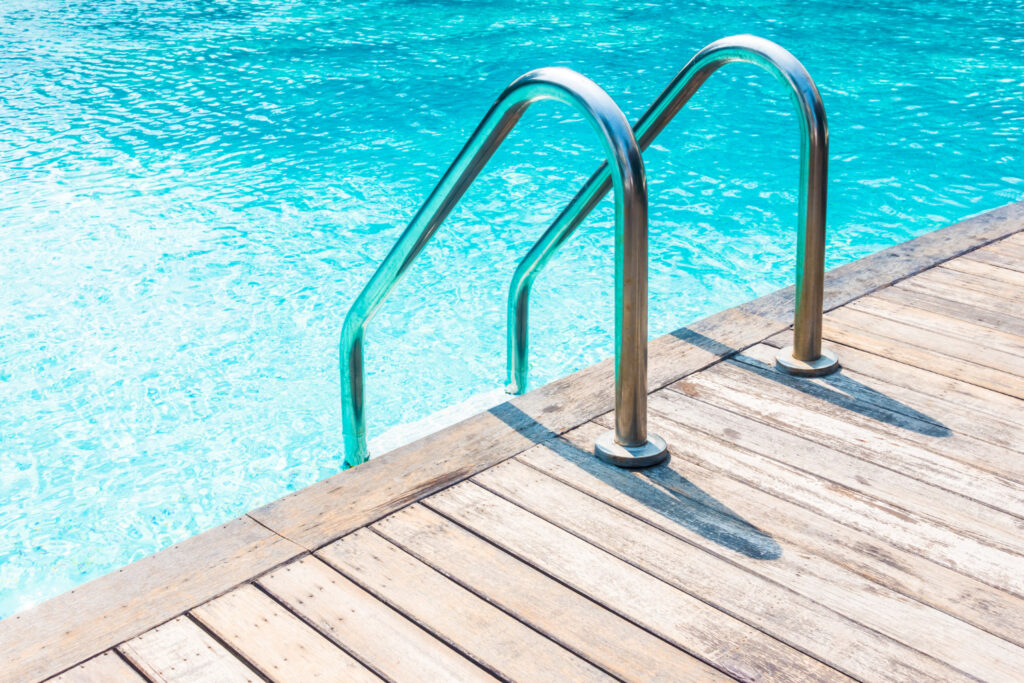
Aluminum Dock vs Boat Ladders What s Right for Your Watercraft
When it comes to accessing your watercraft, having the right ladder is crucial. Whether you’re climbing onto a dock or boarding your boat, choosing between aluminum dock and boat ladders can make a significant difference in safety and convenience. In this article, we’ll delve into the pros and cons of each option, provide ladder safety tips, and help you decide which ladder is best for your needs.
Understanding the Basics
Before diving into the comparison, it’s essential to understand what each type of ladder offers. Aluminum dock ladders are typically mounted on the side of a dock, providing easy access from the water. These ladders are known for their durability and resistance to rust, making them an excellent choice for various weather conditions.
Aluminum Dock Ladders
Aluminum dock ladders are a staple in many waterfront setups due to their inherent qualities. They are designed to withstand the rigors of aquatic environments, making them a reliable choice for both residential and commercial docks. The aluminum construction not only prevents rust but also ensures a long lifespan even with regular exposure to water and sunlight. Additionally, the design of these ladders often includes wide steps or rungs, offering comfort and security when climbing up or down.
Boat Ladders
On the other hand, boat ladders are specifically designed to be attached to the boat itself. They offer a convenient way to board your vessel from the water and come in different styles, including telescoping, folding, and stationary options. Each style caters to different needs and boat designs, providing flexibility in how they are used. For instance, telescoping ladders can be easily extended or retracted, making them ideal for boats with limited storage space.
Key Differences
The primary difference between dock and boat ladders lies in their installation and usage. Dock ladders are fixed to a structure, providing a stable and permanent access point, while boat ladders offer mobility and versatility. Understanding these differences is crucial in determining which ladder type best suits your watercraft needs. Additionally, the choice may also depend on factors such as the type of activities you engage in on the water and the size of your vessel.
Benefits of Aluminum Dock Ladders
Durability and Weather Resistance
Aluminum dock ladders are renowned for their durability. Constructed from aluminum, these ladders are lightweight yet strong, capable of withstanding harsh weather conditions. Unlike other materials, aluminum doesn’t rust, which makes it an ideal choice for dock environments exposed to water and moisture.
The lightweight nature of aluminum makes these ladders easy to handle during installation or removal. Furthermore, their durability is not just limited to rust resistance; aluminum ladders are also resistant to corrosion, a common issue in marine environments. This resistance ensures that the ladders maintain their structural integrity over time, reducing the need for frequent replacements or repairs. Moreover, their sturdiness provides confidence to users, knowing that the ladder can support weight without bending or breaking.
Easy Installation and Removal
One of the significant advantages of aluminum dock ladders is their ease of installation. Most models come with straightforward mounting hardware, allowing you to attach them to your dock effortlessly. Additionally, during off-seasons or when not in use, these ladders can be easily removed and stored, preserving their condition and longevity.
The ease of installation and removal is particularly beneficial for those who have seasonal docks or need to move the ladders for maintenance purposes. Many aluminum dock ladders feature a quick-release mechanism, enabling users to detach them without tools. This feature is advantageous when preparing the dock for winter or adverse weather conditions. Furthermore, the ability to remove and store the ladder helps in prolonging its lifespan, as it can be protected from environmental wear during periods of inactivity.
Cost-Effectiveness
Investing in an aluminum dock ladder can be cost-effective in the long run. While the initial cost might be higher compared to ladders made of other materials, the longevity and low maintenance requirements of aluminum ladders make them a wise investment. Over time, the reduced need for repairs and replacements can lead to significant savings. Additionally, aluminum’s recyclability adds an environmental benefit, making it an eco-friendly choice for conscientious consumers.
Exploring Boat Ladder Options
Telescoping Boat Ladders
Telescoping boat ladders offer flexibility and compact storage. These ladders can be extended when needed and retracted when not in use, saving space on your boat. They are a popular choice for smaller vessels where storage space is limited.
The compact design of telescoping ladders makes them ideal for boats with limited deck space. They can be easily stored away without taking up valuable room on your vessel. When deployed, these ladders provide a stable and secure means of boarding, even in choppy waters. Many telescoping ladders are crafted with non-slip steps, enhancing safety for users. Moreover, the ease of extension and retraction ensures that even novice boaters can use them without difficulty.
Folding Boat Ladders
Folding boat ladders are designed for convenience and ease of use. They can be quickly deployed when required and folded back after use. This type of ladder is perfect for boats where quick access to the water is necessary, such as during water sports activities.
The design of folding ladders allows for easy deployment, making them suitable for spontaneous water activities. They often feature locking mechanisms that secure the ladder in place when in use, preventing accidental folding. This added security is crucial during activities such as swimming or diving, where stability is paramount. Additionally, the ability to fold the ladder away protects it from damage when not in use, extending its lifespan.
Stationary Boat Ladders
Stationary boat ladders are permanently attached to the boat. They are sturdy and provide reliable access to your watercraft. While they don’t offer the same flexibility as telescoping or folding ladders, their robust construction makes them a dependable choice for frequent use.
The permanence of stationary ladders offers peace of mind, knowing that access to the water is always available. These ladders are often constructed with heavy-duty materials to withstand regular use and the forces of the water. Their fixed nature means there is no need to worry about setup or removal, making them ideal for boats that are used frequently. Additionally, stationary ladders can often support more weight, accommodating multiple users at once, which is beneficial for larger groups.
Comparing Aluminum Dock and Boat Ladders
Safety Considerations
Safety is a paramount concern when choosing between aluminum dock and boat ladders. Dock ladders typically offer more stability due to their fixed position, providing a secure ascent and descent. However, boat ladders are closer to the water level, allowing for easy boarding.
When evaluating safety, it’s important to consider the specific environment in which the ladder will be used. Dock ladders, with their fixed installation, can handle rougher waters and provide a reliable entry and exit point. In contrast, boat ladders, while offering direct access to the boat, require careful installation to ensure they remain secure during use. Additionally, the material of the ladder plays a role in safety; non-slip surfaces and handrails are beneficial features that reduce the risk of slipping or falling.
Versatility and Convenience
When considering versatility, boat ladders take the lead due to their portable nature. They can be easily detached and used across different boats if needed. Dock ladders, while not portable, offer convenience for those who frequently use a particular dock.
The portability of boat ladders means they can be transferred between vessels or even taken along on trips where different docking facilities are used. This adaptability is particularly useful for boaters who visit various locations. On the other hand, dock ladders provide consistent and reliable access to the water, making them ideal for permanent setups where the dock is frequently used. Ultimately, the choice between versatility and convenience will depend on the user’s specific boating habits and preferences.
Cost and Maintenance
Cost is another factor to consider when choosing between dock and boat ladders. Generally, aluminum dock ladders might have a higher upfront cost, but their durability and low maintenance can make them more cost-effective over time. Boat ladders, depending on the type, can vary in price, with telescoping and folding options often being more expensive due to their complex mechanisms. Maintenance requirements also differ; dock ladders may need regular checks for mounting security, while boat ladders might require attention to joints and moving parts to ensure smooth operation.
Ladder Safety Tips
To ensure safety while using either type of ladder, consider the following tips:
- Inspect Regularly: Regularly check your ladder for any signs of wear, corrosion, or damage. Address issues promptly to prevent accidents.
Regular inspections are vital in maintaining the safety and functionality of your ladder. Look for signs of rust, especially if your ladder is not made of aluminum, and check for loose screws or bolts. It’s also important to ensure that any moving parts, such as hinges or telescoping sections, operate smoothly without obstruction. Addressing small issues immediately can prevent them from developing into larger, more costly problems.
- Secure Properly: Ensure that the ladder is securely mounted, whether on the dock or boat, before use.
Proper installation is key to preventing accidents. For dock ladders, verify that the mounting hardware is tight and that the ladder is stable before use. Boat ladders should be securely attached to the boat with locking mechanisms in place to avoid slipping during use. Always follow the manufacturer’s instructions for installation to ensure maximum safety.
- Use Handrails: Always use handrails when climbing up or down to maintain balance and prevent slips.
Handrails provide additional support and stability, especially in wet or slippery conditions. When using a ladder, maintain a firm grip on the handrails to help distribute your weight evenly and prevent falls. If your ladder doesn’t have built-in handrails, consider installing them or using a rope or similar support to aid in climbing.
- Avoid Overloading: Adhere to the weight limits specified by the manufacturer to prevent structural damage or failure.
Every ladder has a weight limit, and exceeding this can compromise its structural integrity. Be mindful of the ladder’s capacity and avoid carrying heavy loads up or down. Overloading can lead to bending or breaking, posing a serious risk to safety. Always check the manufacturer’s guidelines and ensure that the ladder is suitable for the intended use.
Choosing the Right Ladder for Your Watercraft
The choice between aluminum dock and boat ladders ultimately depends on your specific needs and usage patterns. If you frequently dock at the same location and prioritize stability, an aluminum dock ladder may be your best bet. However, if you own a boat and require flexibility and portability, a boat ladder will suit you better.
Assessing Your Needs
Consider the size of your boat, the frequency of use, and the typical conditions where you dock or sail to make an informed decision. For larger boats, a stationary ladder might be more suitable, providing stable and constant access. Conversely, smaller boats or those used for varied activities might benefit from the versatility of a folding or telescoping ladder. Evaluate how often you plan to use the ladder and under what conditions to determine the best fit for your lifestyle.
Evaluating Environmental Factors
The environment in which your ladder will be used is also a critical consideration. For docks located in areas with rough waters or strong currents, a sturdy aluminum dock ladder might be ideal. In calm, sheltered waters, a portable boat ladder could suffice. Additionally, consider the climate; aluminum ladders are particularly advantageous in humid or salty environments due to their resistance to corrosion.
Budget Considerations
Finally, factor in your budget when choosing a ladder. While aluminum dock ladders may require a higher initial investment, their durability often translates into long-term savings. Boat ladders, depending on their style and complexity, come at varying price points, allowing for flexibility in budget constraints. Weigh the cost against the features and longevity of the ladder to ensure you make a cost-effective choice.
Conclusion
Whether you opt for an aluminum dock ladder or an Aluminum boat ladder, ensuring safety and convenience should be your top priorities. By understanding the benefits and limitations of each type, you can select the ladder that best compliments your watercraft activities. Remember to follow ladder safety tips to enjoy a secure and enjoyable experience on the water.
With the right ladder in place, you can look forward to seamless access to your watercraft, enhancing your overall boating adventures. A well-chosen ladder not only improves safety but also adds to the enjoyment of your time on the water, allowing you to focus on the activities you love without worry. Take the time to assess your needs, consider your options, and make a decision that will serve you well for years to come.





